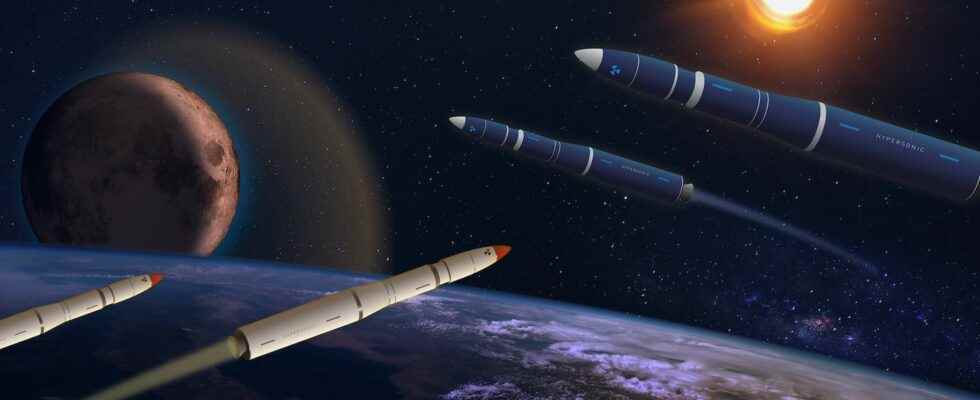The fastest missiles travel faster than sound. Not only at supersonic speeds. But even, at so-called hypersonic speeds, that is to say at least 5 times higher than that of sound. Some even reach incredible speeds, over 20 times the speed of sound. Among them, the Russian Avangard missile is currently the fastest in the world.
You will also be interested
[EN VIDÉO] The fastest radio-controlled aircraft in the world This radio-controlled aircraft became the fastest in the world on January 19, 2021 thanks to its pilot, Spencer Lisenby. It has no propeller, no engine, or reactor and yet, this device has just reached the speed of 882 km/h by exploiting nothing other than the force of the air masses in the mountains. . © Dynamic Soaring
A missile is a weapon guided and propelled by a rocket. Its objective: to deliver a conventional or nuclear charge with the best possible precision. And usually, at high speed. From missile, there are many types. For example, they can be classified according to their scope. There are thus short-range and long-range missiles. But we can also distinguish between ballistic missiles and cruise missiles.
The conventional cruise missiles generally travel at a speed that does not exceed 1,000 km/h. More than 3,600 km / h, all the same, for the improved French air-to-ground medium-range nuclear missile (ASMPA). But so-called hypersonic cruise missiles can go much faster. To deserve their name, they must also be launched at a speed of at least five times the speed of sound (Mach 5), i.e. at least 6,000 km/h. Russia, for example, announces that its Zircon — code name 3M22 Tsirkon –, fired from a ship — surface or submarine — and which could be deployed by 2027 can reach a cruising speed of 8 times the speed of sound. We are not far from 10,000 km / h! It’s a bit the same for another model, the BrahMas-II.
The Russian military says its new hypersonic weapon has become operational. The Avangard is capable of flying 27 times faster than the speed of sound, the military says. https://t.co/Y4YzSZxwI1
— The Associated Press (@AP) December 28, 2019
Almost 30 times the speed of sound!
Operational since 2017, the Kinjal aeroballistic missile – still a Russian weapon – can reach Mach 10, or some 12,000 km/h. What distinguishes ballistic missiles is that their trajectory is essentially outside theearth’s atmosphere. Enough to travel over intercontinental distances. While cruise missiles are constantly propelled, ballistic missiles are only propelled during part of their ascent phase. They then reach Mach 20. And even Mach 23 when they enter theatmosphere.
The Dongfeng-5B, developed by China, for example, is close to 27,000 km/h. While the Dongfeng-41 is advertised as exceeding 30,000 km/h.
Hypersonic gliders — or Hypersonic Glid Vehicle (HGV) — are launched by this type of ballistic missiles. the Air launched rapid response weapon (AGM-183 ARRW) is one of them. It could reach Mach 20 when operational by 2023.
Russia is already announcing that its glider hypersonic called Avangard maneuvers at Mach 20 at an altitude of 100 kilometers. That is a cruising speed of around 25,000 km/h! And it would even have reached Mach 27, that is to say more than 33,000 km/h. For a machine that can carry nuclear charges and changing course in a totally unpredictable way is no small thing.
Interested in what you just read?
